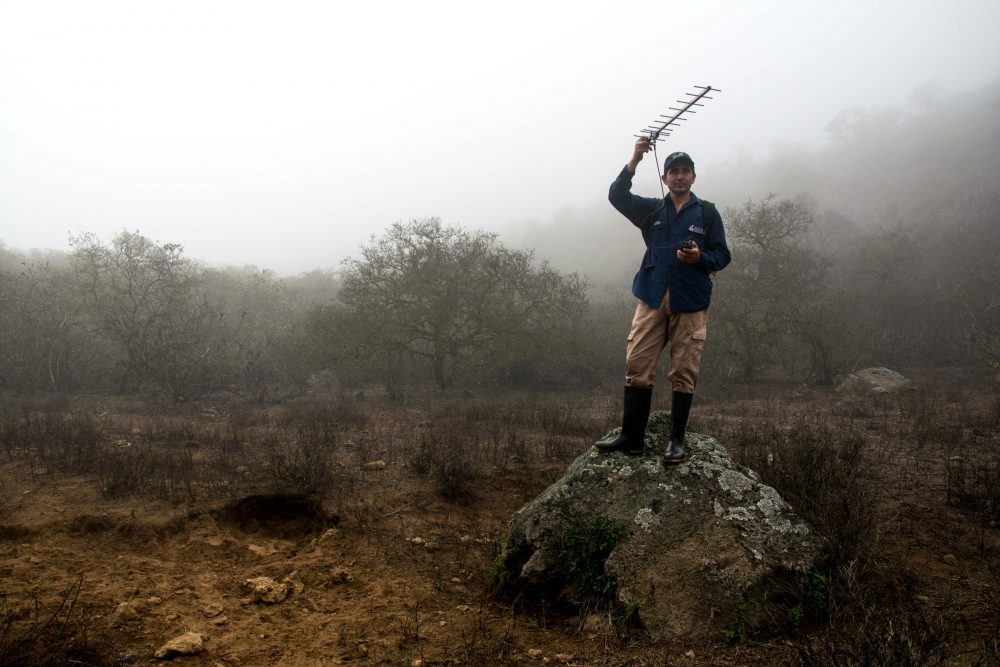
Martin Clunes in Galapagos
Martin Clunes: Islands of the Pacific In this final episode of the three-part series, Martin's journey across the Pacific Islands ends in the Galapagos Islands. He learns about the importance and conservation of this unique Archipelago - including some of the projects that Galapagos Conservation Trust (GCT) proudly supports.
Catch up on Martin Clunes: Islands of the Pacific which aired on ITV on 27 January 2022. In this episode of the three-part series, Martin’s journey across the Pacific Islands ended in the Galapagos Islands. He learned about the importance and conservation of this unique Archipelago – including some of the projects that Galapagos Conservation Trust (GCT) proudly supports. Catch up here.

On Santa Cruz island, Martin joins the Galapagos Tortoise Movement Ecology Programme (GTMEP) team on an expedition to find one of the Archipelago’s most famous residents. Galapago is an old Spanish word for tortoise and gave its name to the Islands.
Martin joins Ainoa Nieto Claudín, researcher, wildlife veterinarian and laboratory manager of the Charles Darwin Research Station for a closer look at the Galapagos tortoises. Ainoa and the GTMEP team have been studying Galapagos tortoises with support from GCT for the past decade, hoping to stop any more species from disappearing. Their mission is to improve our understanding of the ecology of these iconic reptiles in order to inform future conservation strategies.
The team showed Martin how we monitor giant tortoise hatching by finding a buried nest of eggs, mark it, tag the hatchlings when they emerge, and then track their progress using a wireless transmission system called telemetry.
Ainoa recalls this being a great experience, and enjoyed the opportunity to share the work GTMEP do in remote areas, most tourists don’t get to see, like Cerro Fatal. Although filmed back in 2019, Ainoa remembers they walked very far, and it was a long and very hot day. Martin never complained about Freddy, researcher and co-founder of GTMEP, walking too fast or when Ainoa “talked about tortoise health and science for hours” – her words, not ours!

Martin also visits the bustling morning fish market in Puerto Ayora, where people mingle with the wildlife as the day’s catch is prepared and sold, while sea lions wait (impatiently) for tasty treats.

Martin discovers there are strict rules around fishing in the Galapagos Marine Reserve which increase protections for endangered species. He meets fisher Manolo Yepes, who admits he used to break the rules in order to survive. But he now works with scientists on vital research aimed at protecting Critically Endangered scalloped hammerhead sharks.
Manolo takes Martin and a team of marine biologists, supported by GCT as part of our Endangered Sharks of Galapagos programme on an expedition. They visit Puerto Grande, a remote part of San Cristobal, to visit the shark nursery grounds. Based on reports from the fishing community about scalloped hammerhead pups at the site, the research team has been monitoring Puerto Grande since 2017. Martin got stuck in and helped set the heavy seine nets, and the team taught him how to take all the data from the shark pups that we need for monitoring and genetic studies. You can read more behind the scene stories by researcher Yasuní Chiriboga here.

While not featured in the show, Martin also stopped by at the Galapagos launch of Marti the Hammerhead Shark on San Cristobal island in Decemebr 2019. Marti the Hammerhead Shark (or Marti la Tiburon Martillio in Spanish) is our children’s storybook written as part of our Connecting With Nature programme, you can learn more about this book here.

We really enjoyed watching the show, and thank Martin Clunes for highlighting some of our important projects. Catch up here.
Martin said, “Because I love watching nature programmes and natural history programmes, I thought I knew about the islands of Galapagos, I knew that the sea lions live alongside iguanas that swim, and finches and Charles Darwin and all of that. But I’d no idea that there were any people here, and what there is, is a really lovely family-centric community of Ecuadorian people who live here kind of in harmony with those animals, with the iguanas and the sea lions. This is the Galapagos very few people know about. And in the end, it’s this Galapagos that’s unexpectedly won me over.”
Ways to get support conservation in Galapagos
If you are left inspired by the incredible Galapagos Islands, why not become a member today for as little as £3 a month, and help to preserve these Islands for years to come? Or why not help support the conservation of the Endangered species highlighted in the show and adopt a Galapagos giant tortoise, Scalloped hammerhead shark or even Marti the Hammerhead Shark.

